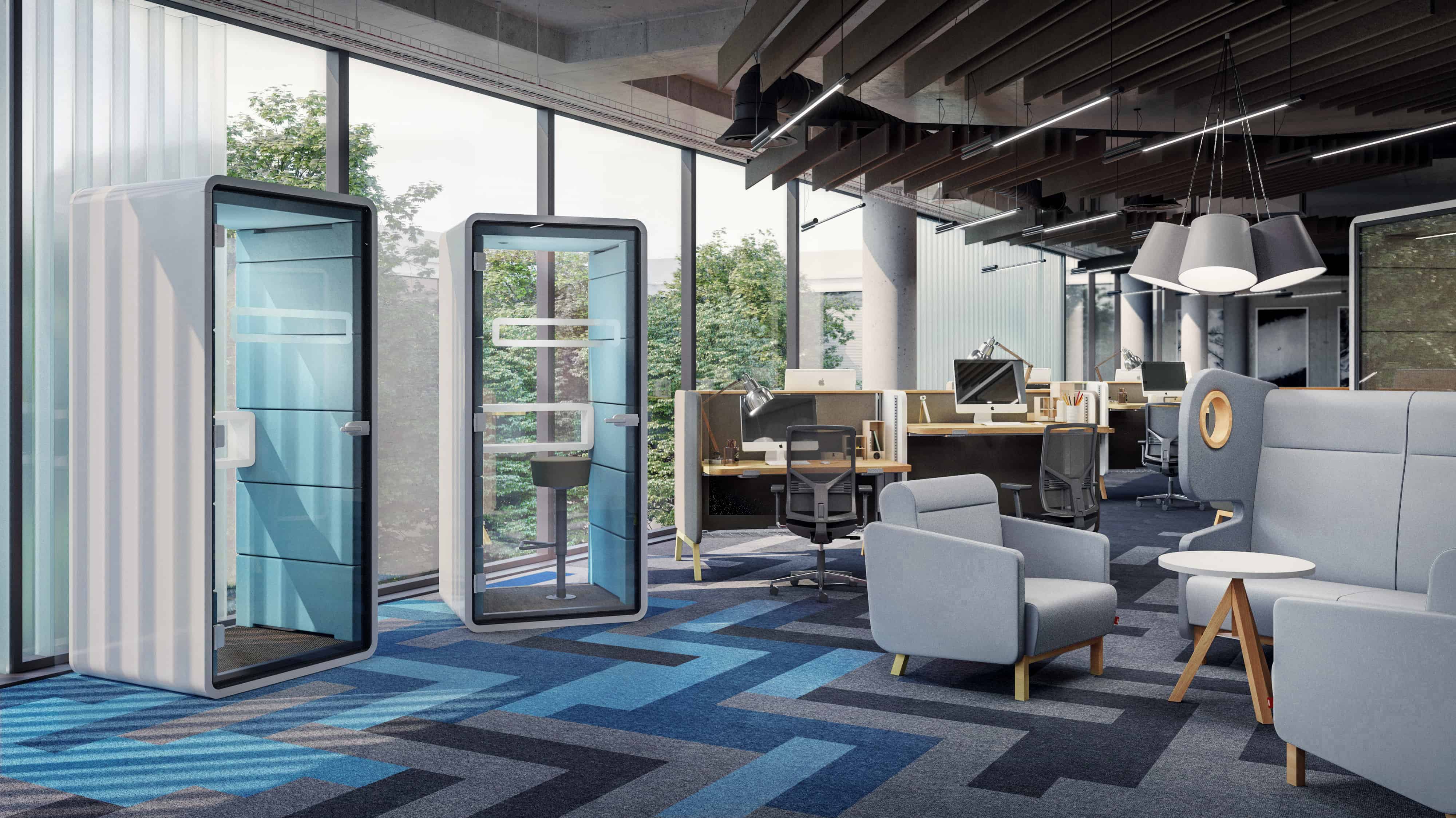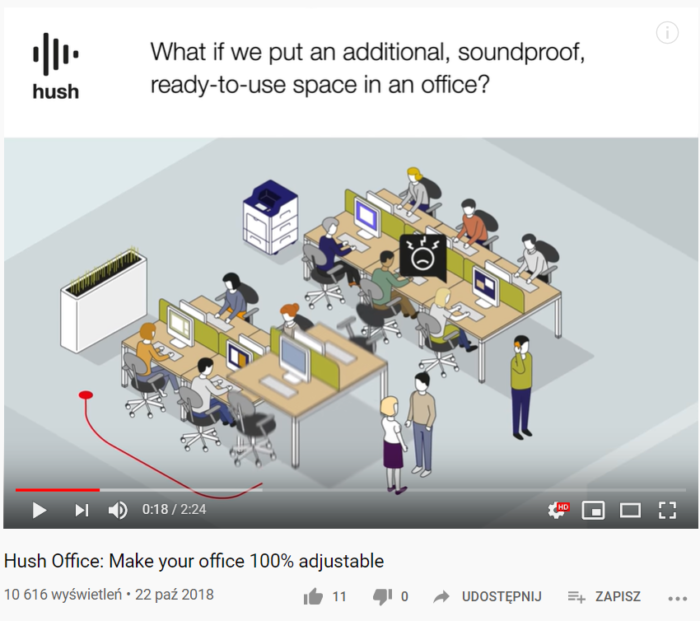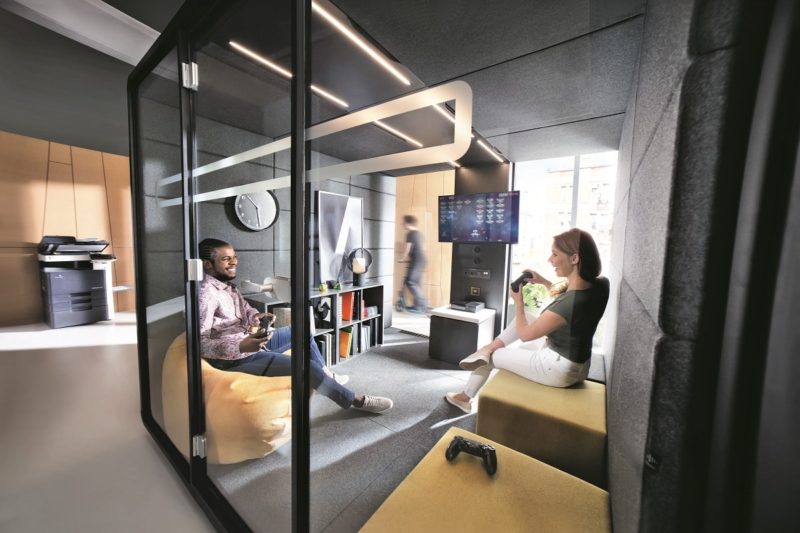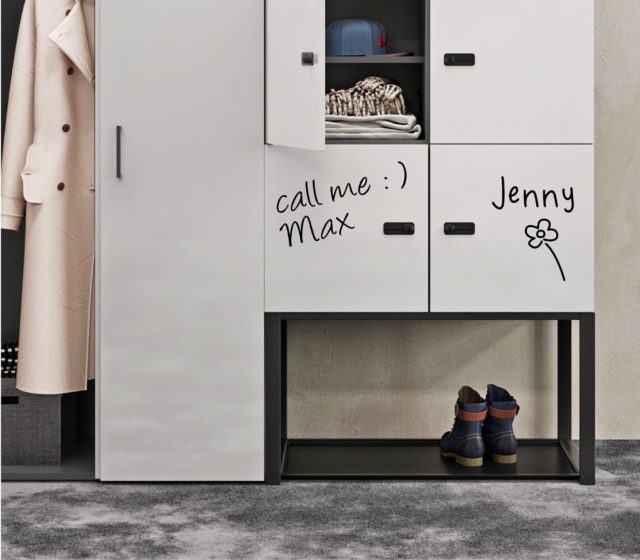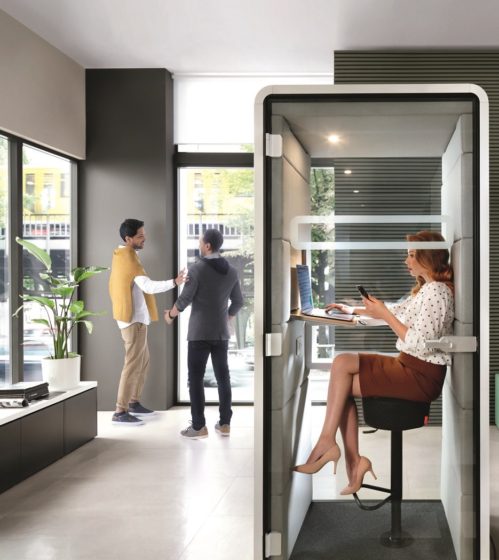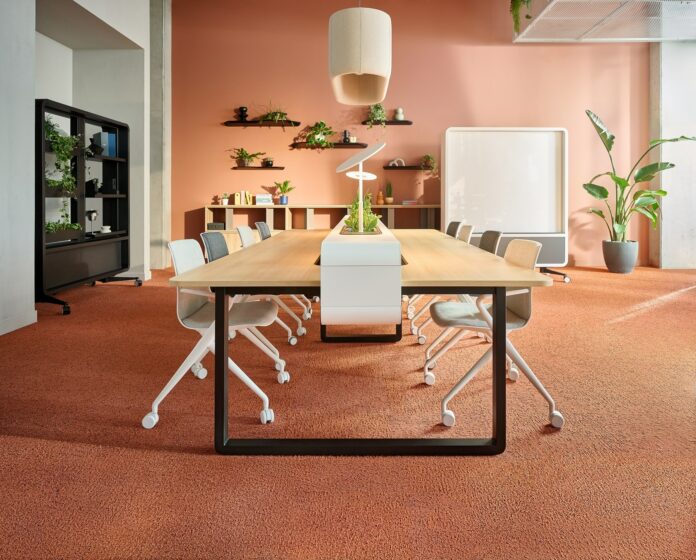How to give employees autonomy in the open office
A call for optimal workspaces — balancing the noise and restoring autonomy. The need for autonomy — control over how we work and live — is a basic human one. Without it, we feel stressed out and unhappy. This is especially true at work. And especially understood in the open office.
- Posted on: 27 November 2019
- By: Hushoffice Team
The open office and autonomy (or the lack thereof)
The open office deprives the worker of autonomy at multiple levels.
With all walls, partitions, and dividers eliminated, office noise is an antagonizing force that prevents sharp focus. And though noise is the infamous externality, other environmental conditions such as ventilation and lighting are also problematic. Each of these factors affects well-being. And each of them is placed outside the employee’s control in a purely open office.
Without solutions like sound-absorbing privacy dividers, employees feel like they are being monitored or micromanaged (even if they are not). This typical experience shouts ‘lack of autonomy over space.’ Employees need private spaces to do work. They also need to feel trusted rather than micromanaged, which accompanies this affordance of private space. They need autonomy. Without a variety of available workspaces, they are confined to one desk all day. Here, the psychological issues of having insufficient autonomy are compounded by an office ergonomics cardinal sin: being deprived of the freedom to move.
The statistics: autonomy and performance
“The most satisfied workers enjoy a high degree of choice and control in their workplace and are able to work effectively both alone and in groups.”-Steelcase’s Engagement and the Global Workplace report
Employees with control over their work are empowered to find their personal flow within their tasks and the office space itself. With this freedom, the best work with the happiest approach is possible.
- 79% of autonomous employees are more engaged in their work than employees who lack autonomy
- Autonomy drives innovative behavior
- Employees who experience higher levels of autonomy report higher levels of job satisfaction and improved well-being overall
- Autonomy catalyzes creativity and engagement and contributes directly to efficiency
Restoring autonomy by giving employees CHOICE in how they work
“Today’s workplace is an ecosystem, and the best workplace experiences are built on variety, choice, and autonomy. Providing a great workplace experience also yields direct business performance benefits. Great workplaces create more engaged employees; and more engaged employees are the key to business productivity and profit.” -Gensler’s 2019 U.S. Workplace Survey
According to Gensler’s 2019 Workplace Survey, offices that are mostly open but have ample private spaces enjoy the most productive employees. That’s because employees in these spaces enjoy their experience at the office due to its variety of available work settings (work pods, collaboration areas, work cafes, soundproof rooms, etc….). For those of us who’ve invested in ‘open’ and have been disappointed by the return, the insight is encouraging — the open office isn’t entirely flawed; the concept of ‘open’ just needs to be balanced with the necessity for ‘closed.’ And ‘closed’ is what office pods provide.
Work pods (or office booths) give employees the freedom to move through spaces throughout the day as fitting to their tasks, energy levels, and moods. In hand with the foundational benefits of merely having autonomy, this freedom to move affords a clear ergonomic and wellness benefit.
The benefit of work pods: autonomy at three distinct and essential levels
“Workplace choice is just one part of a broader culture of autonomy. With the support of organizational policy, and the right alignment of tools and technology to optimize productivity, it allows workers to optimize their own job performance, leaving them more satisfied, motivated, and creative…”-Diane Hoskins, Co-CEO, Gensler
The beauty of implementing word pods to restore autonomy in the open office is that it gives employees control over their work environment at three distinct and essential levels.
- What kind of pod do I want to work in? Large or small? Open or partially-closed? Sitting or standing?
- What conditions do I want to set in my pod? Bright or dim lighting? Binaural beats music or ambient silence? Medium or high ventilation?
- Which pods do my project team need more of to support our work patterns next month? Two more conference pods? One more partially-closed collaborative pod? One more solo pod for our new cold call outreach campaign?
Envision: a bright, open office outfitted with a variety of strategically-placed portable, mobile pods. Solo pods line the walls. They brilliantly sound-insulate your top sales reps’ video conferences, allowing them to bring a self-assured presence to important client connects. Meeting pods of various sizes and designs are set up beside individual pods. These pods embrace the free flow of collaboration by design (group autonomy matters, too). And a handful of semi-open pods complete the array. They offer a hybrid of ‘separation from’ and ‘connection to’ the broader environment, allowing the flow of energy from the office space to permeate and invigorate impromptu, electric meetings. These semi-open pods are excellent for those who need a little bit of chaos to brainstorm.
In this perfect scenario, each employee is empowered by choice. They can choose what kind of pod they want to work in, picking the size and atmosphere that will best support their task. And they can adjust the environmental conditions of the pod to suit their preferences.
hushMeet.open – a partially open pod. Available in a range of sizes to accommodate 4 people
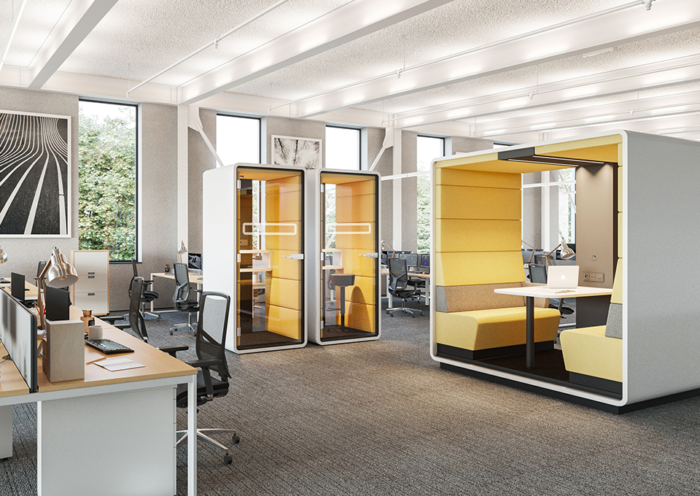
What’s more, with Hush, your team has an active role in shaping the design of your office. Simply issue a routine survey gauging satisfaction with the current layout and areas for improvement. If changes are needed, add to, relocate, and expand your Hush pod family to accommodate. This is autonomy on the next level.
“…the physical environments that employees experience in office buildings affect employees’ well-being, satisfaction, and efficiency… the work environment should be designed in a way that motivates people who work within it toward better behavior and outcomes.”-Perceived Level of Personal Control Over the Work Environment and Employee Satisfaction and Work Performance. Performance Improvement. 2015.
Full-circle: work pods give the YOU total control over your office’s design
The ‘pod’ approach to completing the open office is a smart one financially. Each pod is a one-time investment that affords countless layout configurations into the future. Best of all, they don’t need to be disassembled to be relocated and can be expanded by simply adding more modules. Unlike conference rooms and office suites, they aren’t fixed or permanent — they adapt to change.
This kind of flexibility equates to total control over the design of your office space. Rather than being locked into a structure that is no longer useful when the team grows or dynamics change, you can move and expand your pods quickly as needed.
With Hush, your team takes your workspaces with you — wherever your journey takes you.
Download the AR app and discover what Hush would look like in your office today
